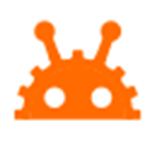
(View Complete Item Description)
Students explore the biosphere's environments and ecosystems, learning along the way about the plants, animals, resources and natural cycles of our planet. Over the course of lessons 2-6, students use their growing understanding of various environments and the engineering design process to design and create their own model biodome ecosystems - exploring energy and nutrient flows, basic needs of plants and animals, and decomposers. Students learn about food chains and food webs. They are introduced to the roles of the water, carbon and nitrogen cycles. They test the effects of photosynthesis and transpiration. Students are introduced to animal classifications and interactions, including carnivore, herbivore, omnivore, predator and prey. They learn about biomimicry and how engineers often imitate nature in the design of new products. As everyday applications are interwoven into the lessons, students consider why a solid understanding of one's environment and the interdependence within ecosystems can inform the choices we make and the way we engineer our communities.
Material Type:
Activity/Lab,
Lesson Plan
Authors:
Christopher Valenti,
Denise W. Carlson,
Malinda Schaefer Zarske




















